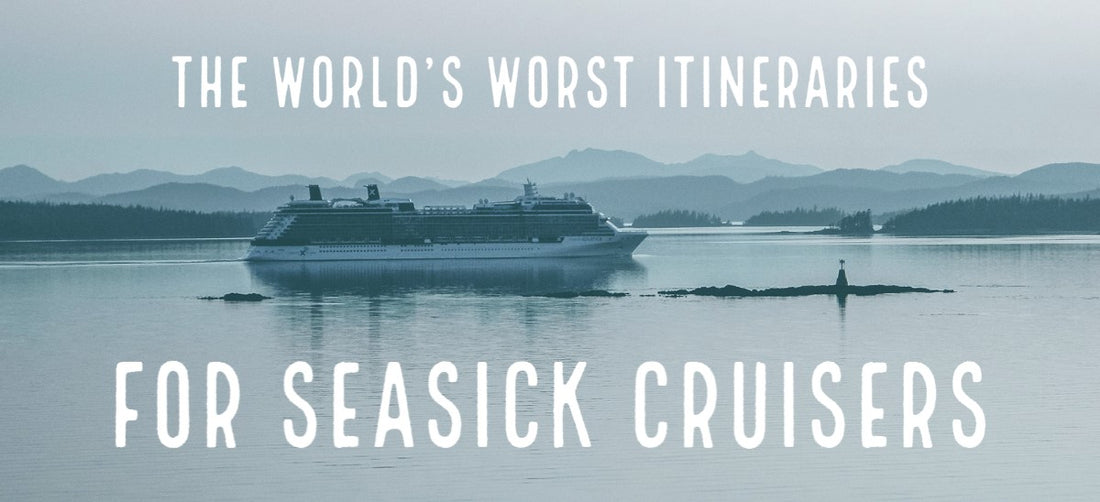After a long hiatus, it is now possible to start cruising again, but have you ever wondered what cruises you might want to avoid? If you're prone to motion sickness, the following itineraries are ones you'll want to think twice about. (And if you do decide to go, don't forget your Blisslets!)

1. Drake Passage / Cape Horn (Chile)
Waves tend to be rougher where two bodies of water meet, and that's especially true on the southern tip of South America. Ships headed to Antarctica will have to make this notorious crossing, so come prepared. Larger ships tend to move less, so take that into account when choosing a company. For a relatively affordable option, try the Celebrity Infinity, though you'll have to wait until early 2023.
2. Cape of Good Hope (South Africa)
At the meeting of the Atlantic and Indian Oceans is Africa's southern tip, the Cape of Good Hope. It's a beautiful location, but choppy waters are ever-present here. If you're set on going, larger ships, and especially ones with modern stabilizers, are your best bet (along with a nice set of Blisslets 😉).
3. Ocean Crossings
Cruising usually happens in an ocean or sea, and though tranquil waters are not guaranteed in either, transatlantic and transpacific cruises are more likely to experience harsh conditions, given the size of the bodies of water. Spring and summer are the best times to try a transatlantic crossing, as well as going on cruises to Bermuda. Unfortunately, for transpacific cruises (e.g.: West Coast U.S. to Hawaii), it is harder to predict when rough seas might strike.
4. Gulf of Alaska
If you've been on an Alaskan cruise limited to the Inside Passage, you might be wondering what on earth I'm talking about, as that's about one of the calmest bodies of water anywhere. However, if your Alaskan adventure is taking you over the unprotected Gulf of Alaska, turbulent waters are possible. Try booking your trip before Labor Day for a better chance of calm seas.
5. Hurricane / Typhoon Seasons
Depending on where your cruise is going, there are different seasons to observe for stormy weather. Cruise lines will still run voyages during these times, diverting ships from the path of storms, but keep in mind that your itineraries might change, and that even if you're not directly in the path of the storm, disturbances may be felt in the water even far away. For Bermuda, Mexico, and the Caribbean, the official hurricane season is June 1 through November 30, but storms are most active from August into the fall. If you're headed for the Mediterranean, your best bet is cruising during spring and summer. Finally, if you're traveling around China, Japan, the Philippines, or South Korea, typhoon season runs from May to October.
While these are the most significant itineraries to watch out for if you're prone to seasickness, keep in mind that any time you head out to sea, it is never certain what how weather may affect your trip, so come prepared. If you're especially concerned about getting nauseated, we recommend starting to wear your Blisslets before setting out, and before any situation when rougher waters are expected. If you're feeling great, you can try giving them a rest and seeing how you do, and figure out the best times to wear them accordingly. Keep in mind that when it comes to nausea, we're all different, so movement that makes one person violently ill might have no effect on another. Finally, don't forget to stay well hydrated and avoid over-indulging in foods that may be hard on your stomach and trigger queasiness.

